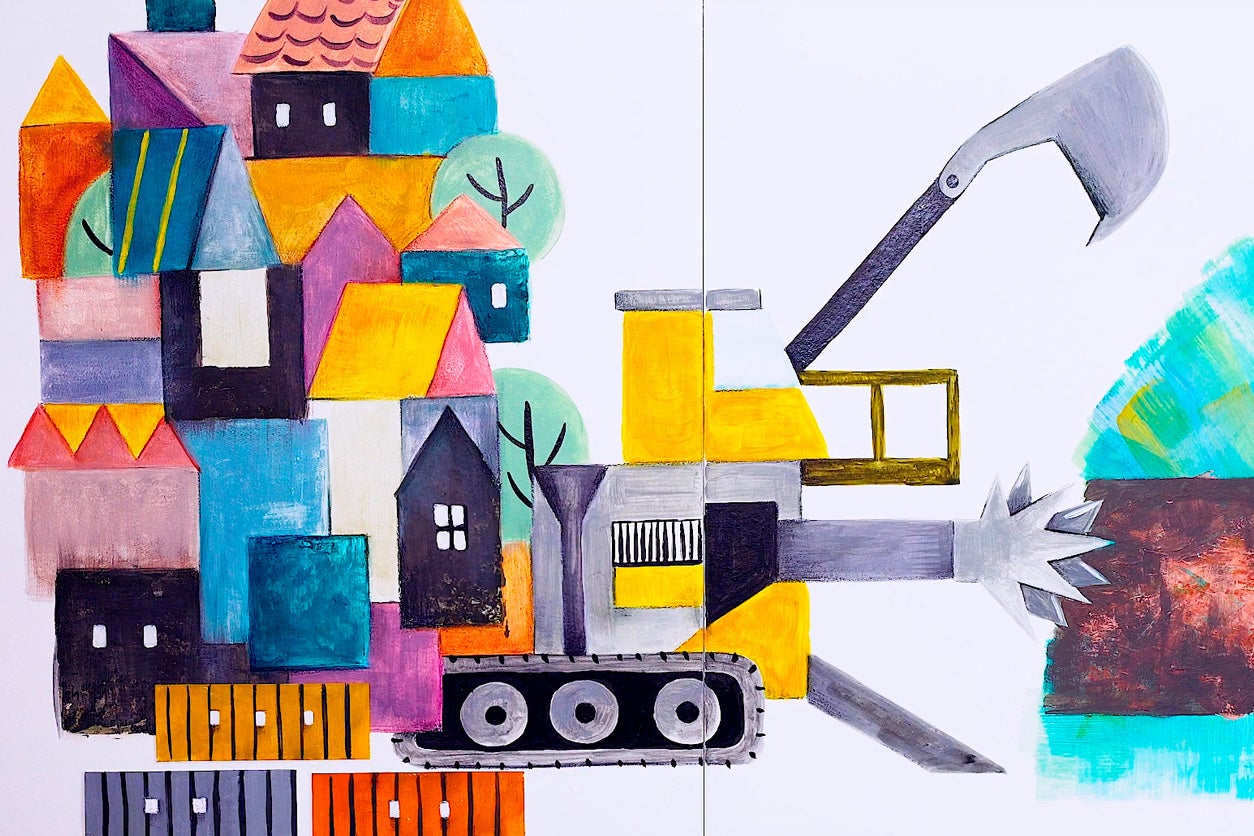You might recall that in the first installment of this series we introduced you to the town of Tremont. Tremont is the backdrop for the stories that illustrate the risks addressed by Environmental and Social Performance Standard 9 (ESPS 9). This standard, which is part of our new Environmental and Social Policy Framework (ESPF), recognizes that the risks of sexual and gender-based violence, exploitation, discrimination and abuse towards boys, girls, women and people of diverse sexual orientations and gender identities are a prevalent global problem.
In the second blog post, our videos introduced you to the construction manager, Gilberto; the food stand owner, Sandra; the welder, Wendy; and the project worker, Rooster, who shared obscene photos with his male colleagues.
This time, we bring you the moving story of Melanie, the 14-year-old daughter of Gloria, who works for the project. As a minor, Melanie ends up being victimized by Robert Branch, the project’s foreman. Unfortunately, this is not an unusual situation, as girls are especially vulnerable to sexual abuse and exploitation.
Sexual abuse, a component of sexual and gender-based violence (SGBV), constitutes a violation of human rights, a form of discrimination, an obstacle to equity and a health risk. A recent study conducted by the Pan American Health Organization compares the global and regional prevalence of sexual violence and shows how sexual violence is higher in Latin America and the Caribbean. The main victims are girls and adolescents and, in most cases, the perpetrators are people these girls know, usually those who provide them with some form of care.
It is necessary to keep this context in mind when designing and implementing development projects in the region, given a project can exacerbate existing risks and gender inequalities. Therefore, to prevent SGBV in projects, concrete actions must be taken and the principle of zero tolerance must be applied in matters related to gender-based violence.
How to prevent the risks associated with sexual and gender-based violence in projects?
- Identify and assess any project risks that exacerbate SGBV in the community, including human trafficking and sexual harassment, exploitation and abuse. If cases are identified, work with available support services for survivors of gender-based violence, including health services, psychosocial support, legal advice, police surveillance, and shelters.
- Define and implement measures to prevent and address risks. For example, requiring contractor companies to have clear policies on sexual harassment and verifying that workers know and respect codes of conduct.
- Maintain close communication with the communities, informing them about the project-related risks of gender-based violence, the prevention and mitigation measures, the mechanisms to file complaints related to gender-based violence and the details of the process in terms of procedures and possible outcomes, as well as support services available to gender-based violence survivors.
- Respond promptly to any indication or confirmation of an SGVB incident, ensuring that victims have access to various forms of support and services.
- Ensure the availability of effective grievance mechanisms that minimize the reporting burden on victims, offer gender-sensitive services and minimize the risk of retaliation. Those mechanisms should contain specific procedures for SGBV, including confidential reporting with secure and ethical documentation.
To sum up…
As discussed, a project may aggravate existing gender inequalities. Gender analysis helps define the appropriate measures in order to prevent, reduce, mitigate and/or compensate for said risks, protecting the most vulnerable populations, such as girls, boys and adolescents.
As part of their environmental and social risk and impact assessment process, projects must be reviewed to identify as early as possible potential risks and impacts that may disproportionately affect girls and adolescents, as in Melanie’s case, and women and LGBTQI+ populations. To do so, it is essential for the project to maintain open and constant communication with the community and to provide grievance mechanisms through which to alert of these cases in a confidential and secure manner.
Actions to avoid, minimize and mitigate the negative impacts identified and provide compensation with mechanisms that promote gender equality can increase inclusive participation throughout a project, reduce the different types of preventable sexual violence, and strengthen social responsibility and institutional response.
This blog post is part of a series about sexual and gender-based violence incidents that can occur in the context of a project. Check out the other two installments:
Gender equality: nuanced risk management
The many faces of sexual and gender-based violence in development projects
If you would like to learn more about ESPS 9 of the new Environmental and Social Policy Framework, take our self-paced course.


Leave a Reply